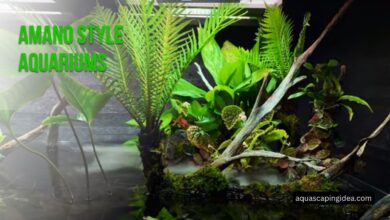Why is My Aquarium Water Green?
As an aquarium enthusiast, few sights are more disheartening than peering into your tank only to find it filled with murky, green water. This common problem, often referred to as “pea soup” or an algae bloom, can be frustrating and concerning for both novice and experienced aquarists alike. But fear not! In this comprehensive guide, we’ll dive deep into the world of green aquarium water, exploring its causes, solutions, and prevention methods.
Whether you’re a beginner just starting your aquatic journey or a seasoned hobbyist facing this issue for the first time, understanding the science behind green aquarium water is crucial for maintaining a healthy, vibrant underwater ecosystem. So, let’s embark on this aquatic adventure and unravel the mystery of why your aquarium water has turned green.
The Root Cause: Algae Overgrowth
What Are Algae?
Algae are simple, photosynthetic organisms that play a vital role in aquatic ecosystems. In a balanced aquarium, they can contribute to oxygen production and provide a food source for some inhabitants. However, when conditions are right (or rather, wrong), algae can multiply rapidly, leading to the green water phenomenon.
Types of Algae Causing Green Water
While various algae species can cause problems in aquariums, green water is primarily caused by unicellular algae, also known as phytoplankton. These microscopic organisms float freely in the water column, giving it a uniform green tint. The most common culprits include:
- Chlorella
- Chlamydomonas
- Scenedesmus
These algae species are distinct from the more visible forms of algae that grow on surfaces, such as hair algae or black beard algae.
Factors Contributing to Algae Blooms
Understanding the factors that contribute to algae blooms is crucial for both solving the immediate problem and preventing future occurrences. Let’s explore the primary culprits:
1. Excessive Nutrients
One of the most significant factors in algae growth is an abundance of nutrients, particularly nitrates and phosphates. These compounds serve as food for algae, fueling their rapid reproduction.
Sources of excess nutrients include:
- Overfeeding
- Overstocking (too many fish for the tank size)
- Inadequate water changes
- Decaying organic matter (uneaten food, dead plants, fish waste)
2. Imbalanced Lighting
Light is essential for photosynthesis, the process by which algae produce energy. An imbalance in lighting can significantly contribute to algae blooms:
- Too much light: Excessive lighting, especially if the aquarium receives direct sunlight or artificial lights are left on for extended periods, can promote algae growth.
- Spectrum imbalance: Certain light spectrums can favor algae growth over that of higher plants.
3. Poor Filtration
Inadequate or inefficient filtration can lead to a buildup of organic waste and nutrients in the water, creating an ideal environment for algae to thrive.
4. Imbalanced CO2 Levels
In planted aquariums, an imbalance between CO2, nutrients, and light can favor algae growth over that of higher plants.
5. New Tank Syndrome
Newly set up aquariums are particularly susceptible to algae blooms as the ecosystem is still establishing itself and beneficial bacteria populations are not yet fully developed.
The Impact of Green Water on Your Aquarium
While green water might seem like just an aesthetic issue, it can have significant impacts on your aquarium’s ecosystem:
- Reduced visibility: The murky water can make it difficult to see and enjoy your aquatic pets and plants.
- Oxygen depletion: During nighttime, when photosynthesis stops, the large algae population can consume significant amounts of oxygen, potentially stressing or harming fish and other inhabitants.
- pH fluctuations: The photosynthetic activity of algae can cause significant swings in pH levels throughout the day.
- Nutrient competition: Algae can outcompete higher plants for nutrients, potentially leading to plant health issues in planted tanks.
- Filter clogging: The abundance of algae can quickly clog filters, reducing their efficiency.
Solutions: Clearing the Green Water
Now that we understand the causes and impacts of green water, let’s explore effective solutions to clear up your aquarium:
1. Water Changes
Performing frequent, large water changes (up to 50% every few days) can help remove excess nutrients and algae from the water column. However, this is often a temporary solution and should be combined with other methods for long-term success.
2. UV Sterilization
UV sterilizers are highly effective at clearing green water. They work by exposing the water to ultraviolet light, which kills free-floating algae as it passes through the device.
Pros:
- Highly effective against free-floating algae
- Does not introduce chemicals into the aquarium
Cons:
- Can be expensive
- Requires ongoing energy consumption
- May need to be removed once the issue is resolved to avoid over-sterilizing the water
3. Chemical Treatments
Various chemical treatments are available that can help clear green water:
- Algaecides: These products directly kill algae but should be used with caution as they can harm beneficial bacteria and other aquarium inhabitants.
- Flocculants: These chemicals cause algae to clump together, making them easier to remove through filtration or manual cleaning.
Note: Always follow product instructions carefully and consider potential impacts on fish, plants, and beneficial bacteria.
4. Blackout Method
This method involves completely blocking all light from entering the aquarium for 3-5 days:
- Turn off all lights and cover the tank with a dark material.
- Remove or reduce feeding during this period.
- Ensure good water circulation to prevent oxygen depletion.
While effective, this method can stress plants and some light-sensitive fish species.
5. Improving Filtration
Upgrading or optimizing your filtration system can help remove excess nutrients and algae from the water:
- Consider adding mechanical filtration media to trap algae particles.
- Increase biological filtration to help process excess nutrients.
- Ensure proper maintenance and regular cleaning of filter media.
6. Balancing Nutrients and CO2
For planted tanks, ensuring a proper balance between light, nutrients, and CO2 can help higher plants outcompete algae:
- Use CO2 injection systems to provide adequate carbon for plant growth.
- Implement a consistent fertilization regimen tailored to your plants’ needs.
- Adjust lighting duration and intensity to match CO2 and nutrient levels.
7. Natural Algae Control
Introducing algae-eating species can help keep algae populations in check:
- Fish: Otocinclus catfish, Siamese algae eaters, and some species of pleco can help control algae.
- Invertebrates: Amano shrimp, cherry shrimp, and nerite snails are excellent algae eaters.
- Plants: Fast-growing plants like hornwort, water sprite, and duckweed can compete with algae for nutrients.
Prevention: Keeping Your Aquarium Clear
Preventing green water is often easier than treating it. Here are some key strategies to maintain a clear, healthy aquarium:
1. Regular Maintenance
- Perform weekly water changes (10-25% depending on bioload).
- Clean the substrate and decorations regularly to remove debris.
- Maintain your filter system, cleaning or replacing media as needed.
2. Proper Feeding
- Feed only what your fish can consume in 2-3 minutes.
- Remove uneaten food promptly.
- Consider fasting your fish one day per week to reduce waste production.
3. Appropriate Lighting
- Use a timer to maintain a consistent lighting schedule (8-10 hours per day is often sufficient).
- Avoid placing the aquarium in direct sunlight.
- Choose appropriate spectrum lights for your specific setup (planted vs. fish-only).
4. Balanced Stocking
- Avoid overstocking your aquarium.
- Research the adult size and waste production of fish species before adding them to your tank.
5. Plant Management
For planted tanks:
- Maintain a healthy plant population to compete with algae for nutrients.
- Regularly prune and remove dead or decaying plant matter.
- Ensure proper fertilization and CO2 levels to promote plant health.
6. Water Quality Monitoring
- Regularly test your water parameters (pH, ammonia, nitrite, nitrate, phosphate).
- Address any imbalances promptly.
- Consider using phosphate-removing media in your filter if phosphate levels are consistently high.
The Role of Patience in Aquarium Management
It’s important to note that achieving and maintaining a balanced aquarium ecosystem takes time. Newly set up tanks are particularly prone to algae issues as they go through the cycling process and establish beneficial bacteria populations. Patience and consistent care are key to long-term success.
Aquarium Water Quality: By the Numbers
To better understand the ideal conditions for preventing green water, let’s look at some target parameters for a healthy freshwater aquarium:
| Parameter | Ideal Range | Notes |
|---|---|---|
| pH | 6.5 – 7.5 | Varies by species |
| Ammonia | 0 ppm | Any detectable amount is harmful |
| Nitrite | 0 ppm | Any detectable amount is harmful |
| Nitrate | < 20 ppm | < 10 ppm for sensitive species |
| Phosphate | < 0.5 ppm | Lower is better for algae control |
| Temperature | 75-80°F (24-27°C) | Varies by species |
| Lighting | 8-10 hours/day | Adjust based on plant needs |
FAQ: Common Questions About Green Aquarium Water
Q1: How long does it take to clear green aquarium water?
A1: The time it takes to clear green water can vary depending on the method used and the severity of the bloom. UV sterilization can show results in a few days, while natural methods might take 1-2 weeks or more.
Q2: Can green water harm my fish?
A2: While not directly harmful, green water can lead to oxygen depletion and pH swings, which can stress or harm fish. It’s important to address the issue promptly.
Q3: Will adding more plants help prevent green water?
A3: Yes, a well-established planted aquarium can help prevent green water by competing with algae for nutrients. However, plants need proper care, lighting, and nutrients to be effective.
Q4: Is it safe to use algaecides in my aquarium?
A4: While algaecides can be effective, they should be used with caution. Some can harm beneficial bacteria or be toxic to certain fish and invertebrates. Always follow product instructions carefully and consider gentler methods first.
Q5: Can I use tap water to fill my aquarium?
A5: Tap water can be used, but it should be treated with a water conditioner to remove chlorine and chloramines. Some tap water sources may be high in phosphates, which can contribute to algae growth.
Conclusion
Green aquarium water, while frustrating, is a common challenge that many aquarists face at some point. By understanding the underlying causes and implementing appropriate solutions and prevention strategies, you can maintain a clear, healthy aquatic environment for your underwater friends.
Remember, a balanced aquarium is an ecosystem in miniature. It requires patience, consistent care, and a willingness to learn and adapt. Don’t be discouraged if you encounter setbacks – each challenge is an opportunity to deepen your understanding and improve your aquarium keeping skills.

